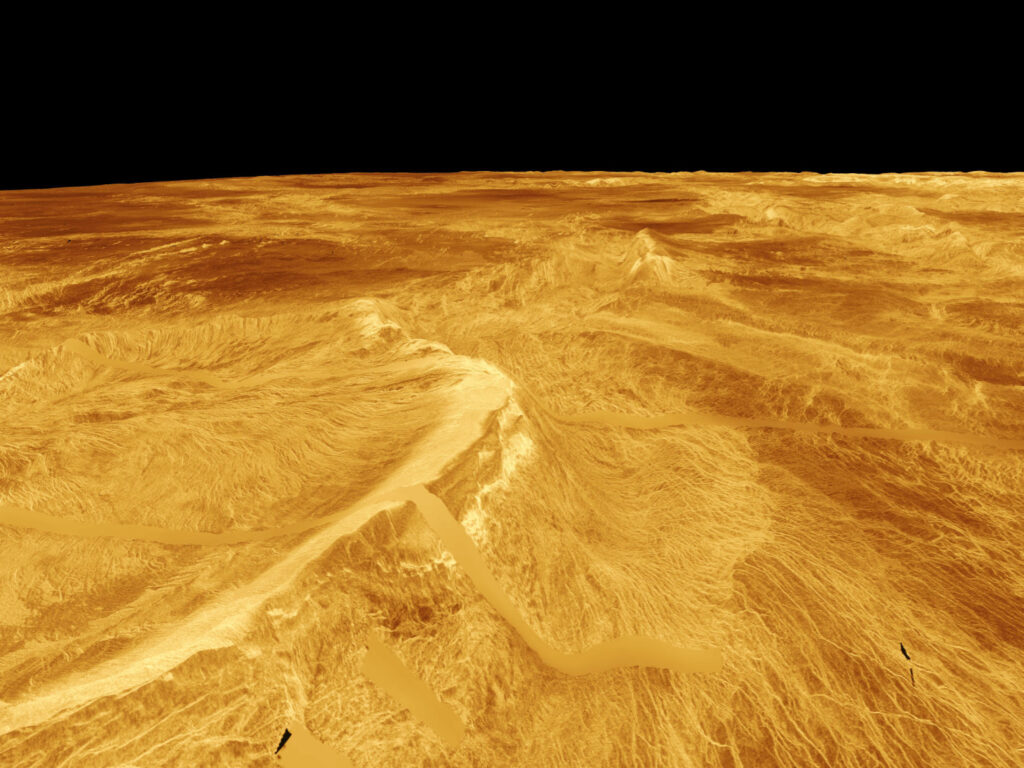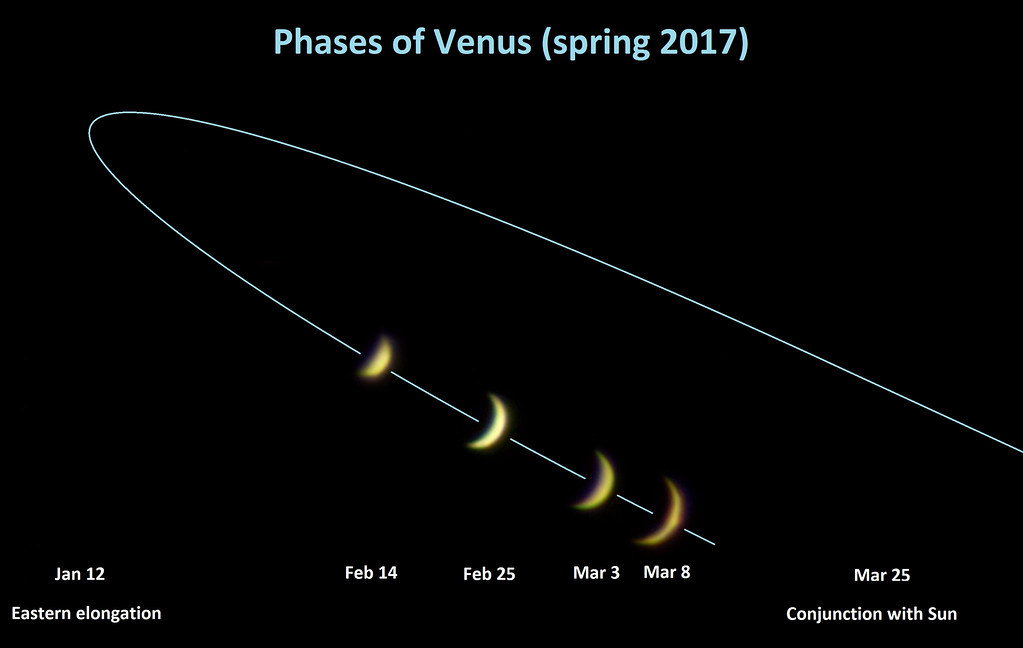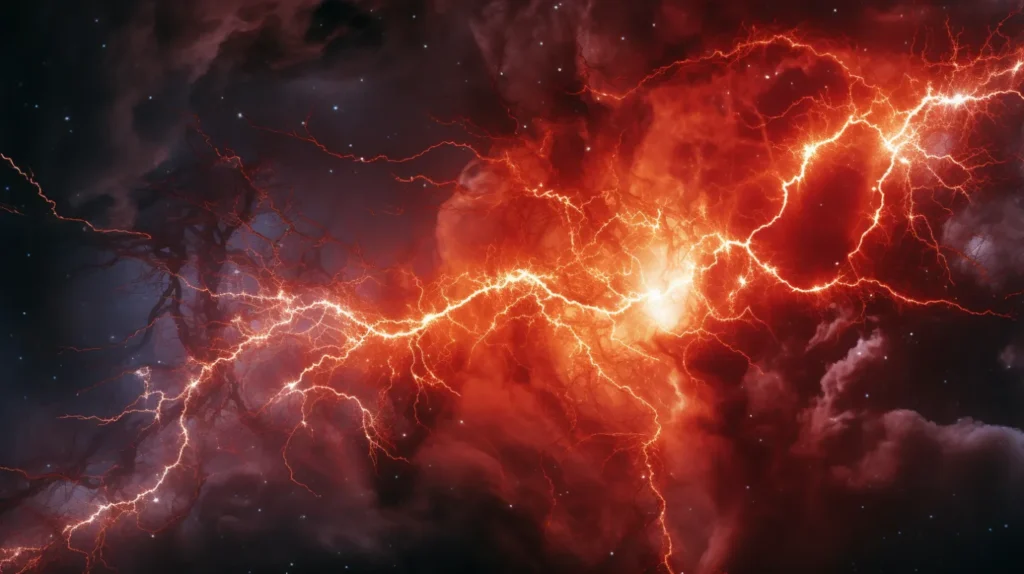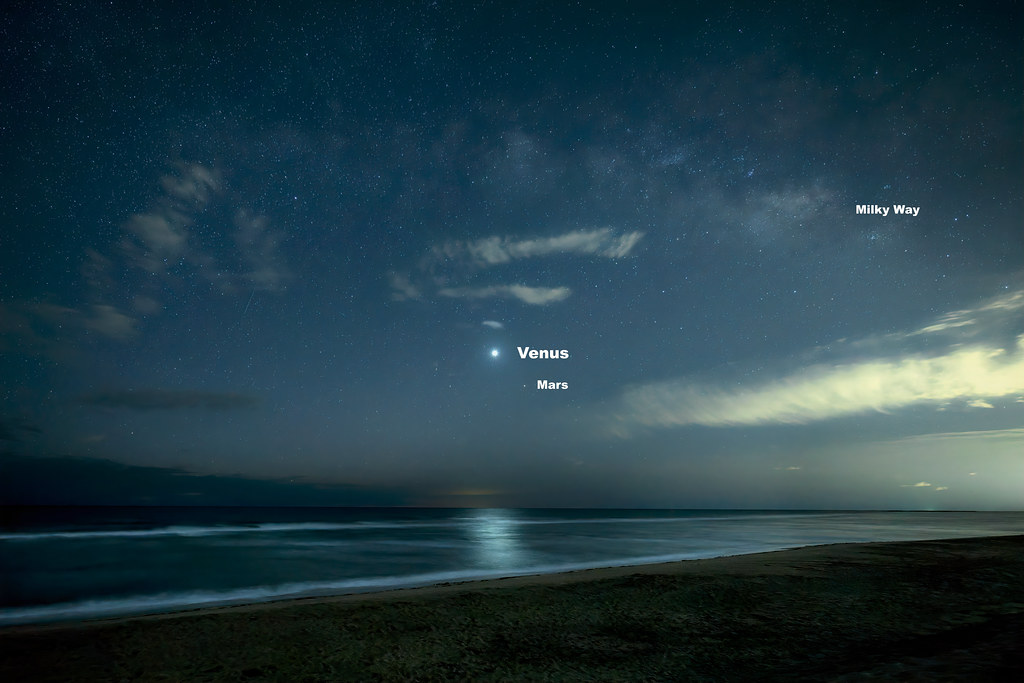47 Amazing Facts About the Planet Venus You Should Know

Venus, the second planet from the sun, is often referred to as Earth’s twin. Despite some similarities, Venus is an extreme world with high temperatures and immense atmospheric pressure. Let’s explore 47 fascinating facts about the mysterious Venus and uncover what makes this planet so unique in our solar system.
Overview
Venus is the second closest planet to the sun. It’s often called Earth’s sister planet due to their similar size and composition. However, the two planets have drastically different environments. Venus is covered in thick clouds of sulfuric acid and experiences scorching temperatures hot enough to melt lead. Understanding more about Earth’s neighboring planet can provide insights into the formation of our solar system and the possibility of life on other worlds.
Physical Characteristics
1. Venus has a similar size and structure to Earth
With a diameter of 7,520 miles (12,104 km), Venus is only about 650 miles (1,050 km) smaller than Earth. Both planets have an iron core, rocky mantle, and solid crust. This comparable size and density causes Venus to sometimes be referred to as Earth’s twin.
2. Venus has the most circular orbit in our solar system
Venus’s nearly circular orbit keeps it an average distance of 67 million miles (108 million km) from the sun. Its low orbital eccentricity of less than 1% makes Venus’s orbit the most circular of any planet.
3. The surface of Venus is relatively young
Estimates place the age of Venus’s surface between 300-400 million years old. In comparison, Earth’s surface is around 100 million years old. The lack of plate tectonics on Venus allowed its surface to remain relatively unchanged over billions of years.
4. Venus has thousands of volcanoes across its surface
Venus has over 1,600 major volcanoes identified so far. This is more volcanoes than any other planet in the solar system. Venus may still have active volcanoes today. Recent evidence in 2019 showed fresh lava flows on Venus’s surface.
5. Craters on Venus appear relatively young
There are over 900 impact craters on Venus’s surface. Compared to other bodies in the solar system, the craters appear relatively young and well-preserved. This suggests the surface of Venus underwent resurfacing through volcanic activity sometime between 300-600 million years ago.
6. Venus has continent-like highlands
Radar mapping of Venus’s surface revealed two continent-sized highland regions, Ishtar Terra about the size of Australia and Aphrodite Terra about the size of South America. The two highlands rise up to 11 km (7 mi) above the lowlands.
7. Venus may have had oceans in the past
Based on the levels of hydrogen and deuterium in its atmosphere, scientists believe Venus once had substantial amounts of water. For nearly 2 billion years, Venus could have had liquid oceans on its surface before a dramatic climate shift evaporated them away.
Atmospheric Properties

8. Venus has the most dense atmosphere in the solar system
The atmosphere of Venus is over 90 times more dense than Earth’s. The atmospheric pressure on Venus’s surface is equal to the pressure 1 kilometer deep in Earth’s oceans. The tremendously dense atmosphere is mostly composed of carbon dioxide.
9. Surface temperatures reach 900°F (480°C)
A runaway greenhouse effect and lack of water make Venus the hottest planet in the solar system. Its average surface temperature is a scorching 880°F (471°C), hot enough to melt lead. The temperature remains relatively consistent across Venus’s entire surface with minimal regional variations.
10. Venus’s thick clouds are made of sulfuric acid
Thick clouds of sulfur dioxide and sulfuric acid completely envelop Venus. The clouds stretch up to 31 miles (50 km) above the planet and reflect 75% of the sunlight that reaches them back into space. These dense, reflective clouds are why Venus appears bright white.
11. Lightning storms occur in Venus’s atmosphere
Within the upper cloud layers of Venus’s atmosphere, sulfuric acid droplets rub together to generate tremendous amounts of static electricity. This builds up and is released through lightning strikes over a thousand times more powerful than lightning on Earth.
12. Venus has extreme wind speeds in its upper atmosphere
High in Venus’s atmosphere, wind speeds can reach up to 224 miles per hour (360 km/h), making these some of the fastest winds in the solar system. These upper cloud winds circle the planet every 4 to 5 Earth days. In comparison, surface winds move very slowly at just a few miles per hour.
13. Venus lacks a protective magnetic field
Unlike Earth, Venus does not generate a magnetic field to deflect solar wind particles. This is likely because of Venus’s slow rotation and lack of plate tectonics. The constant stream of charged particles from the sun has gradually stripped away Venus’s atmosphere gases.
Rotation and Orbit

14. Venus rotates in the opposite direction of most planets
Venus is one of just two planets that rotate clockwise from east to west, the other being Uranus. This phenomenon is known as retrograde rotation and may be the result of Venus colliding with a large celestial object billions of years ago.
15. A day on Venus lasts longer than a year
Due to its unusual retrograde rotation, a single day on Venus lasts for the equivalent of 243 Earth days. On the other hand, it takes Venus only 225 Earth days to complete one orbit around the sun. So a year on Venus passes faster than a single day.
16. Venus has phases like the Moon
Since Venus orbits between the Earth and the Sun, we see different illuminated portions of its surface at different points in its orbit. This creates phases similar to the Moon’s that were first observed by Galileo Galilei in 1610.
17. Transits of Venus are rare predictable events
A transit of Venus happens when Venus passes directly between the Earth and the Sun. Transits occur in a pattern, with pairs of transits 8 years apart separated by gaps of 121.5 and 105.5 years. The last transit was in 2012, and the next will be in 2117.
Geology
18. Much of Venus’s surface is covered in flat plains
Radar mapping of Venus has revealed that over 80% of the planet’s surface consists of relatively flat lowlands dotted with volcanoes. The plains have few impact craters and seem to have formed from extensive lava flows.
19. Venus has continent-like highlands unlike Earth
In addition to lowland plains, Venus has two elevated continent-like regions – Ishtar Terra about the size of Australia, and Aphrodite Terra about the size of South America. It’s unlike the scattered continents on Earth. The creation of these highlands remains a mystery.
20. Venus has a spidery network of tectonic fractures
A global web of tectonic fractures and ridges was identified on Venus in 2021. The network may indicate Venus has a form of subduction distinct from plate tectonics on Earth, providing insights into how tectonics work on rocky planets.
21. Active volcanoes suggest a geologically living world
In 2019, scientists discovered evidence that volcanoes on Venus are still active today. Infrared images revealed heat signatures indicative of fresh lava flows from volcano peaks and flows across plains. Venus joins Earth, Io, and possibly Mars as geologically alive worlds in our solar system.
22. Venus has unique features called tesserae
Tesserae are continent-sized regions on Venus characterized by complex ridged terrain with many cliffs, valleys, and fractures. They may be remnants of thicker, older crust exposed when the lithosphere was compressed. Tesserae are found primarily in the planet’s northern hemisphere.
Environment and Habitability

23. The surface environment is extremely hostile
The combination of extreme heat, immense air pressure, lack of water, and a blanket of sulfuric acid clouds make Venus’s surface environment completely inhospitable to any known forms of life. However, the upper cloud layers roughly 31 miles up may offer more temperate conditions.
24. Lightning strikes are much more powerful than on Earth
The lightning observed in Venus’s turbulent upper atmosphere is thousands of times more powerful than lightning on Earth, releasing huge amounts of energy. A single Venusian lightning strike could have over a billion volts, compared to just 10 million for lightning on Earth.
25. Venus has ozone and sulfuric acid rain
Venus’s upper atmosphere contains ozone which absorbs ultraviolet radiation from the Sun. When energized sulfuric acid droplets collide, they shed electrons and form droplets of pure sulfuric acid that fall as “raindrops” evaporating before reaching the surface.
26. Venus may have active volcanoes and flowing lava
Observations made in 2019 revealed tantalizing evidence of active lava flows on some of Venus’s volcanoes. If confirmed, it would make Venus the only other world in our solar system beyond Earth known to have active volcanism and flowing magma at present.
27. The atmosphere contains almost no water vapor
While Venus may have once had substantial water and oceans, its atmosphere today contains almost no water vapor. Measurements indicate the atmosphere contains just 20 parts per million water vapor, compared to 1-4% on Earth. Venus lost its surface water long ago from evaporation and chemical dissociation.
28. Venus could have had liquid water oceans for 2 billion years
Studies suggest Venus initially formed with large amounts of water like Earth. Models indicate Venus could have had liquid water oceans for over 2 billion years before a drastic shift to its current state around 700 million years ago. What caused this dramatic climate change remains unknown.
29. Venus may have active seismic activity
NASA’s Magellan spacecraft detected unique features resembling trenches along ridges and fractures on Venus’s surface. These features strongly imply Venus experiences subduction zone earthquakes like those on Earth. Venus quakes would be far more powerful due to the extreme atmospheric pressures.
30. The atmosphere contains corrosive sulfur compounds
Venus’s atmosphere consists of 96.5% carbon dioxide, 3.5% nitrogen, and trace amounts of sulfur compounds like sulfur dioxide and sulfuric acid. These sulfur compounds are highly reflective but also absorb ultraviolet radiation. They make the atmosphere extremely corrosive.
Potential for Life
31. Venus likely cannot support life on its surface
The incredibly high temperatures of over 800°F, immense atmospheric pressure, lack of water, and blanket of corrosive sulfuric clouds make Venus’s surface environment completely inhospitable for life as we know it. Venus would seemingly destroy any carbon-based organisms.
32. Acid-resistant extremophiles could potentially survive in the atmosphere
While Venus’s surface is lethal, the upper cloud layers roughly 31 miles up are more temperate. Some scientists theorize that acid-resistant bacteria-like organisms could potentially survive as aerial plankton floating in the milder cloud layers. But this remains speculative.
33. Signs of phosphine in the atmosphere intrigued scientists
In September 2020, astronomers reported detecting traces of phosphine gas in Venus’s upper atmosphere. On Earth, phosphine is associated with life. However, abiotic processes likely explain the phosphine on Venus. The discovery nevertheless sparked interest in studying Venus’s atmosphere for any signs of life.
34. Future probes could check Venus’s atmosphere for life
Future Venus missions could include atmospheric probes and balloons designed to sample the chemistry and microbiology of the atmosphere at different altitudes. While unlikely, a discovery of even simple single-celled organisms would be revolutionary and greatly impact ideas about extraterrestrial life.
History and Exploration
35. Venus was the first planet to be tracked across the sky
As one of the brightest night sky objects, early astronomers could observe and track Venus’s motions long before the invention of the telescope. Ancient Babylonian astronomical records from 1600 BCE track Venus’s appearance and movements across the sky.
36. Galileo first observed the phases of Venus in 1610
In 1610, Italian astronomer Galileo Galilei became the first person to observe the phases of Venus through his telescope. He saw Venus exhibited a full range of phases like the Moon. This was revolutionary in proving Venus orbited the Sun and not Earth.
37. Many spacecraft from various nations have studied Venus
Starting with the Soviet Venera program in 1961, Venus has been explored by over 40 spacecraft, including NASA’s Pioneer Venus mission in 1978 and the Magellan orbiter in 1989. Most recent were ESA’s Venus Express orbiter and JAXA’s Akatsuki which are still studying Venus from space today.
38. The Soviet Venera 7 made the first successful landing on Venus in 1970
On December 15, 1970, the Soviet Venera 7 probe became the first spacecraft to successfully land on Venus’s inhospitable surface. It survived for 23 minutes, just long enough to transmit a weak signal confirming its descent through the atmosphere and landing.
39. Surface conditions destroyed probes within hours
Several Soviet and U.S. probes in the 1970s-80s landed on Venus and transmitted data for various periods ranging from 23 minutes to 2 hours before being destroyed by the extreme temperature and pressure. None survived beyond a few hours. Building probes that can withstand Venus is an ongoing engineering challenge.
40. Magellan used radar to map 98% of Venus’s surface
NASA’s Magellan spacecraft comprehensively mapped Venus’s surface using radar between 1990-1994. With radar able to penetrate the thick clouds, Magellan captured high resolution images of over 98% of the surface and revealed many previously unknown features.
41. Akatsuki is the only spacecraft currently orbiting Venus
Japan’s Akatsuki spacecraft began orbiting Venus in 2015 and continues to study its atmosphere today. It is the only active spacecraft currently at Venus. Akatsuki’s observations have provided new insights into Venus’s cloud dynamics, winds, and surface geology.
42. Future missions will further study Venus’s environment
NASA and other space agencies have proposed future Venus missions including orbiters, landers, aerial platforms, and probes to comprehensively study its hostile environment. Key mission goals include analyzing its surface composition, chemistry, and past water cycles to better understand Earth’s twin.
Cultural Significance

43. Venus was significant in many ancient mythologies
As one of the brightest celestial objects, Venus held major significance in Babylonian, Greek, Roman, Mayan, Aztec, and other mythologies. It was commonly associated with key gods and goddesses, often those tied to beauty, love, and war.
44. Venus epitomized beauty in Roman mythology
To the Romans, Venus was the goddess of love, beauty, desire, fertility, prosperity, and victory. As the Roman counterpart to the Greek Aphrodite, the planet Venus captured the Romans’ vision of idealized feminine beauty and charm.
45. The pentagram shape is based on Venus’s path across the sky
The five interior angles in a pentagram show the path Venus makes across the sky over eight years relative to Earth. This planetary geometry was highly significant to ancient astronomers and influenced many cultures’ architecture, symbols, and rituals.
46. Venus played a role in Mayan civilization
The Mayans closely observed and accurately predicted movements of Venus. Major political and ritual events were planned based on Venus’s position and appearance. Venus was also connected to Mayan warfare, with conflicts planned when Venus was visible.
47. Pop culture often associates Venus with women and love
In modern pop culture, Venus is frequently associated with women, femininity, romance, and love – inspired by its Roman goddess namesake. References can be seen in song lyrics, book and movie titles, video games, and more.
Conclusion
While Venus and Earth have similarities, the second planet from the sun is truly an alien world. Understanding more about the role Venus played in our solar system’s evolution and its potential for life can uncover insights that bring us even closer to solving the mysteries of Earth’s enigmatic twin. As observations continue and new probes are developed, Venus still has much more left to be discovered.

